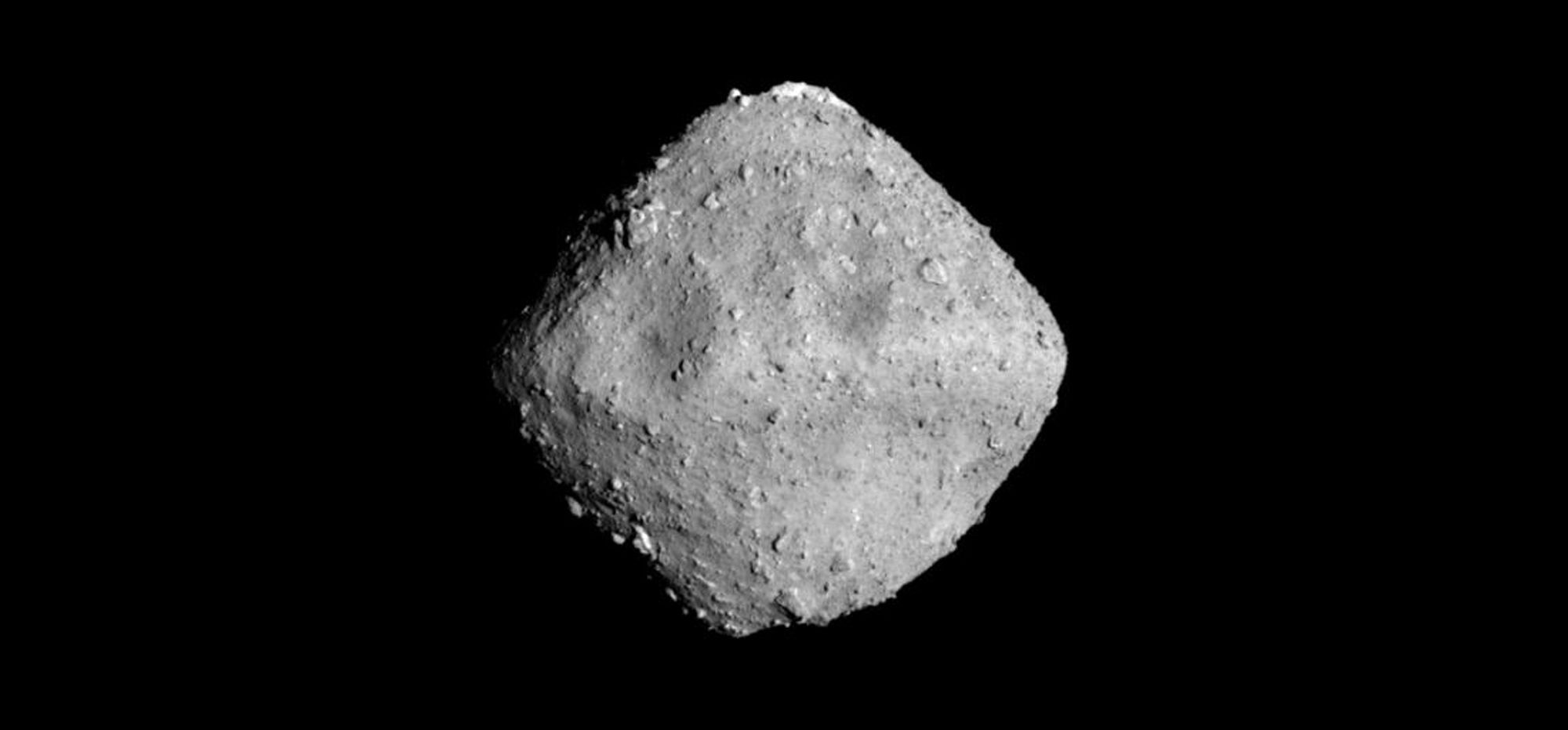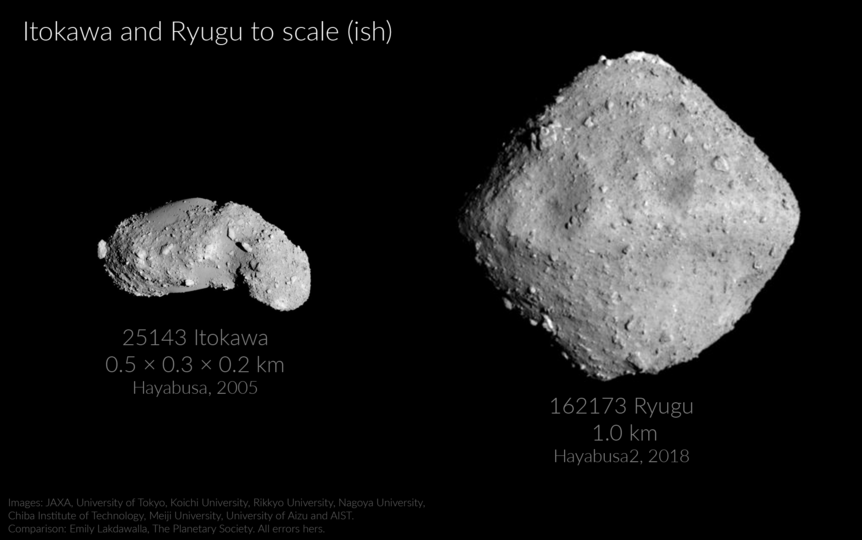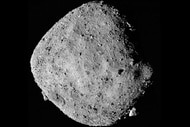Create a free profile to get unlimited access to exclusive videos, sweepstakes, and more!
What would it be like to stand on the surface of Ryugu?

The Japanese Space Agency mission Hayabusa 2 is now orbiting the small asteroid Ryugu!
This grand moment was achieved just after midnight (UTC) on June 27, 2018, when the spacecraft's thrusters shut down after a course change to place it in a circular trajectory around the asteroid. It is currently about 20 kilometers (12 miles) from Ryugu, which itself is about 900 meters (roughly half a mile) in diameter.
When it was still 40 km away, it took this extremely interesting image of the small asteroid:
We've known for some time Ryugu was roughly spherical, but more accurately described as diamond shaped. I'd actually say it's like two squat truncated cones sitting base-to-base (in fact, each hemisphere is about the same shape as a space capsule like Apollo or Dragon).
The surface is weird. You can see one whopping great crater there on the left, about 300 meters wide. A crater this big relative to the parent body is relatively common (see Phobos, Mimas, and Tethys), created in this case when something biggish smacked into Ryugu. In many cases, you don't get craters bigger than this because if the impact were any harder (due to a bigger impactor or a higher velocity at impact) it would literally shatter the asteroid. But I wonder…
The surface of Ryugu isn't smooth. It looks like the surface of a construction site, where smaller pebbles and such make the base, with bigger lumps of rock scattered here and there. This is very persuasive evidence that Ryugu is a "rubble pile" asteroid! Instead of a solid piece of rock, it's more like a big collection of individual rocks bound together by their own gravity. This can happen when a small asteroid suffers lots of little impacts, which riddles it with cracks. Some impacts could even just barely shatter the asteroid, enough to break it up into pieces but not enough to make them fly away. What you're left with is something that looks like a bag of a bunch of different sized rocks without the actual bag.
That's why I wonder if you couldn't get a bigger crater on Ryugu; if it's crunchy instead of solid, it can absorb a bigger impact. The force of impact would go into jostling the loose material instead of shattering it.
Note that the big crater's rim isn't sharp either; it's softer and rounder. I'd expect that from a rubble pile too. We do have close-ups of another rubble pile object, Itokawa, an asteroid visited by another Japanese spacecraft… Hayabusa! The first Hayabusa, that is. Here are the two asteroids compared (put together and scaled by my friend Emily Lakdawalla):
A key observation Hayabusa 2 can make to confirm or contradict this is to measure the gravity of Ryugu. A rubble pile has a lower density than a solid rock (due to there being voids, empty pockets, inside it), so for a given size a rubble pile has less mass than a monolithic asteroid, and therefore lower gravity. That actually shouldn't take too long to determine; the orbit of Hayabusa 2 depends on the gravity, so that's a number we should be getting soon.
The shape is interesting too. There's more at work here than gravity! Imagine you're standing on its surface. Gravity there is incredibly weak; assuming it has a density of about twice that of water (like a low density rock) then the gravity you feel would be less than 0.0002 times that of Earth's! I have a mass of about 80 kilograms, which is a weight of 175 pounds or so on Earth. On Ryugu I'd only weigh about 1/30th of an ounce! If I jumped I could easily escape the asteroid altogether (the escape velocity is about 30 cm/sec, less than 1 mph).
But, as I pointed out in my previous post, Ryugu is a fast rotator, spinning once every 7.5 hours or so. That's important! If you're on a spinning object there's an acceleration (called centripetal acceleration) that you feel as a force pushing you away from the center of the spin. It's the same thing as when you're in a car making a turn and you feel a force in the direction opposite the turn (if you turn left you're thrown right, which is the same as saying you want to go straight but the car turning left makes it feel as if you're being pushed to the right).
This counteracts the force of gravity down, toward the center of Ryugu. I played with the math a bit, and found that on the equator the force outward is about 1/5th or so of gravity! So you'd weigh noticeably less on the equator than you would at the poles just because of this.
If you're not on the equator, that force outward points at an angle away from the center of Ryugu. The net effect is it would feel like you're standing on a slope, downhill toward the equator, even if the ground were perfectly flat! So if you're a rock sitting on Ryugu halfway between the equator and pole, say, and there's a small impact by another asteroid, the ground would shake, dislodging you, and you'd roll toward the equator.
I strongly suspect that's why Ryugu has the shape it does. Stuff has rolled "downhill" toward the equator, piling up there, forming that ridge all the way around, giving it a more diamond-like shape than spherical. If it's a rubble pile, there's a lot of loose material available to do this, too. So these ideas hang together.
We'll get a better idea as Hayabusa studies Ryugu further, especially when it releases the landers/rovers! Then we'll get amazing close-up images of the surface, and learn a vast amount more about this weird little rock orbiting the Sun. A lot of the smaller asteroids are likely to be similar to Ryugu, so it'll be a proxy for a huge collection of tiny worldlets out there. It's time to explore them.
















